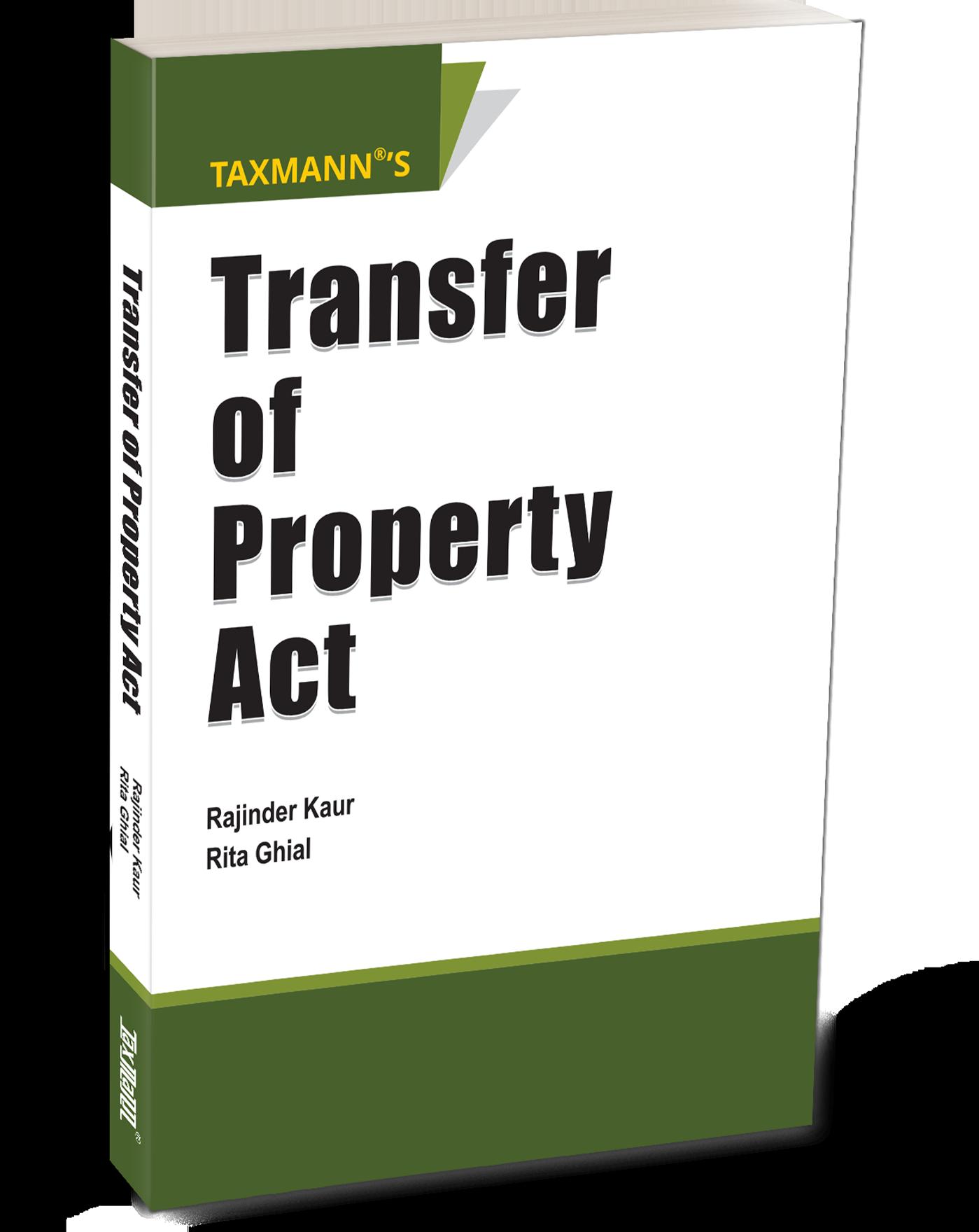



© All rights reserved
Price : ` 575
First Published : October 2025
Published by :
Taxmann Publications (P.) Ltd.
Sales & Marketing :
59/32, New Rohtak Road, New Delhi-110 005 India
Phone : +91-11-45562222
Website : www.taxmann.com
E-mail : sales@taxmann.com
Regd. Office : 21/35, West Punjabi Bagh, New Delhi-110 026 India
Printed at :
Tan Prints (India) Pvt. Ltd.
44 Km. Mile Stone, National Highway, Rohtak Road Village Rohad, Distt. Jhajjar (Haryana) India
E-mail : sales@tanprints.com
Disclaimer
Every effort has been made to avoid errors or omissions in this publication. In spite of this, errors may creep in. Any mistake, error or discrepancy noted may be brought to our notice which shall be taken care of in the next edition. It is notified that neither the publisher nor the author or seller will be responsible for any damage or loss of action to any one, of any kind, in any manner, therefrom. It is suggested that to avoid any doubt the reader should cross-check all the facts, law and contents of the publication with original Government publication or notifications. No part of this book may be reproduced or copied in any form or by any means [graphic, electronic or mechanical, including photocopying, recording, taping, or information retrieval systems] or reproduced on any disc, tape, perforated media or other information storage device, etc., without the written permission of the publishers. Breach of this condition is liable for legal action. For binding mistake, misprints or for missing pages, etc., the publisher’s liability is limited to replacement within seven days of purchase by similar edition. All expenses in this connection are to be borne by the purchaser. All disputes are subject to Delhi jurisdiction only.
2.2
2.1.4
2.1.5 Whether relinquishment deed is transfer of
2.2.1 How contingent interest is different from Spes-successionis?
2.2.2
2.2.3
2.3
2.4
3.1
Transfer of Benefit of Unborn Person
3.1.1
3.1.2
3.1.3
3.2
3.2.1
3.2.2
3.2.3
3.2.4
3.2.5
3.2.6 Transfer to class some of whom come under sections 13 and 14 (Section 15)
3.2.7
to take effect on failure of prior interest (Section 16)
Conditional Transfer
(Sections 10-12, 17 and 25 to 34)
4.1 Condition restraining alienation (Section 10)
4.1.1 Absolute restraint
4.1.2 Restriction as to consideration
4.1.3 Restraints with reference to duration
4.1.4 Restrictions as to persons
4.1.5 Partial restraint
4.1.6 Exceptions
4.2 Restriction repugnant to interest created (Section 11)
4.2.1 Sections 10 and 11
4.3 Condition making interest determinable on insolvency or attempted alienation (Section 12)
4.3.1 Insolvent Transferee
4.3.2 Not applicable to leases
4.3.3 Provision under the Indian Succession Act, 1925
4.4 Direction for Accumulation (Section 17)
4.4.1 Rule against accumulation
4.4.2 Exceptions
4.5 Conditional Transfers
4.5.1 Conditions precedent
4.5.2
4.5.3 Collateral condition
4.5.4 Conditional transfer (Section 25)
4.6 Ful lment of condition precedent (Section 26)
4.7 Doctrine of acceleration (Section 27) 90
4.8 Doctrine of conditional limitation (Section 28) 93
4.9 Ful lment of condition subsequent (Section 29) 95
4.10 Prior disposition not affected by invalidity of ulterior disposition (Section 30) 96
4.11 Condition that transfer shall cease to have effect in case speci ed uncertain event happens or does not happen (Section 31)
4.12 Such condition must not be invalid (Section 32)
4.13 Transfer conditional on performance of act, no time being speci ed for performance (Section 33)
4.14 Transfer conditional on performance of act, time being speci ed (Section 34)
Kinds of Interest, Doctrine of Election and Principles of Apportionment (Sections 19-24 and 35-37)
5.1 Vested interest (Section 19)
5.1.1 Exception
5.2 Contingent interest (Section 21)
5.3 Characteristics of vested and contingent interest
5.4 Contingent interest and Spes-successionis
5.5 When unborn person acquires vested interest on transfer for his bene t (Section 20)
5.6 Transfer to members of a class who attain a particular age (Section 22)
5.7 Transfer contingent on happening of speci ed uncertain event (Section 23)
5.8 Transfer to such of certain persons as survive at some period not speci ed (Section 24)
5.9 Doctrine of election
5.9.1 Analysis of the section
5.9.2 Disappointed Transferee - English and Indian Law
5.9.3 Mode of election
5.9.4 Requisition to election
5.9.5 Suspension of election
5.10 Apportionment
5.10.1 Apportionment of periodical payments on determination of interest of person entitled (Section 36)
5.10.2 Apportionment of bene t of obligation on severance (Section 37)
Concept of Notice and Unconscionable Transfer of Immovable Property (Sections 3, 39, 40, 41, 43, 53 and 53A)
6.1 Concept of notice
6.1.1 Wilful abstention from search which one ought to make
6.1.2 Gross negligence
6.1.3 Registration
6.1.4 Actual possession amounts to constructive notice
6.1.5 Notice to agent
6.2 Transfer where third person is entitled to maintenance (Section 39) 138
6.3 Burden of obligation imposing restriction on use of land (Section 40) 139
6.4 Transfer by ostensible owner (Section 41) 143
6.4.1 Is there any difference between the ostensible owner and benamidar under Benami Transaction Laws? 152
6.5 Transfer by unauthorised person who subsequently acquires interest in property transferred (Section 43) 153
6.5.1 Whether section 43 and section 6(a) are contradictory? 158
6.5.2 Difference sections 41 and 43 of Transfer of Property Act, 1882 162
6.6 Fraudulent transfer (Section 53)
6.7 Doctrine of Part-performance (Section 53A)
6.7.1 Prior to 1929 amendment
6.7.2 After 1929 amendment
6.7.3 Nature of right under section 53A
6.7.4 Section 53A and Res Judicata 183
6.7.5 Difference between English Law and Indian Law 184
7
Transfer of Immovable Property with a Power to Revoke and Priority (Sections 38, 42 and 44-52)
7.1 Transfer by person authorised only under certain circumstances to transfer (Section 38) 186
7.2 Transfer by person having authority to revoke former transfer (Section 42)
7.3 Transfer by one co-owner (Section 44) 189
7.4 Joint transfer for consideration (Section 45)
7.5 Transfer for consideration by persons having distinct interests (Section 46) 193
7.6 Transfer by co-owners of share in common property (Section 47) 194
7.7 Priority of rights created by transfer (Section 48)
7.8 Transferee’s right under policy (Section 49)
7.9 Rent bona de paid to holder under defective title (Section 50) 198
7.10 Improvements made by bona de holders under defective titles (Section 51)
7.11 Doctrine of Lis Pendens (Section 52)
8
Sale of Immovable Property (Sections 54-57)
8.1 Sale (Section 54)
8.1.1 Contract of sale and contract for sale
8.2 Rights and liabilities of buyer and seller (Section 55)
8.2.1 Duties (liabilities) of seller
8.2.2 Liabilities (duties) of the seller after completion of sale
8.2.3 Seller’s right before sale
8.2.4 Seller’s rights after sale
8.2.5 Buyer’s liabilities before completion of sale
8.2.6 Buyer’s rights before completion of sale
8.2.7 Buyer’s liabilities after completion of sale
8.2.8 Rights and liabilities of both the buyers and sellers before completion of sale and after completion of sale
8.3 Marshalling by subsequent purchaser (Section 56)
8.4 Discharge of encumbrances on sale (Section 57)
Mortgages and Charge of Immovable Property (Sections 58-73, 76, 81, 82, 91-96 and 100-104)
9.1 History of mortgage
9.2 Mortgage: De nition and kinds (Section 58)
9.2.1 Simple mortgage
9.2.2 Mortgage by conditional sale
9.2.3 Usufructuary mortgage
9.2.4 English mortgage
9.2.5 Mortgage by deposit of title-deeds
9.2.6 Anomalous mortgage
9.3 Mortgage when to be by assurance (Section 59)
9.3.1 References to mortgagors and mortgagees to include persons deriving title from them (Section 59A)
9.4 Rights of mortgagor
9.4.1 Right of redemption (Section 60)
9.4.2 Obligation to transfer to third party instead of retransference to/mortgagor (Section 60A)
9.4.3 Right to inspection and production of documents (Section 60B)
9.4.4 Right to redeem separately or simultaneously (Section 61) 281
9.4.5 Right of usufructuary mortgagor to recover possession (Section 62) 281
9.4.6 Right to accession (Section 63) 282
9.4.7 Improvements to mortgaged property (Section 63A) 283
9.4.8 Right to renewed lease (Section 64) 283
9.4.9 Right to grant a lease (Section 65A) 284
9.5 Liabilities/Duties of mortgagor
9.5.1 Implied contracts by mortgagor (Section 65)
9.5.2 Waste by mortgagor in possession (Section 66)
9.6 Rights of mortgagee
9.6.1 Right to foreclosure (Section 67)
9.6.2 Right to sue for mortgage-money (Section 68)
9.6.3 Right to sale of mortgaged property in case of nonpayment of mortgage money (Section 69)
9.6.4 Right to get a receiver appointed (Section 69A)
9.6.5 Right to accession to mortgaged property (Section 70)
9.6.6 Right to have the bene t of renewed lease if mortgaged property is leased hold (Section 71)
9.6.7 Right to spend money in preserving the property, defending mortgagor’s title or in renewal of lease if the property is in his possession (Section 72)
9.6.8 Right to receive proceeds of revenue sale (or compensation on acquisition) of the mortgaged property (Section 73)
9.6.9 Liability of mortgagee in possession (Section 76)
9.6.10 Marshalling, subrogation and redemption (Section 81)
9.6.11 Contribution to mortgage-debt (Section 82)
9.6.12 Persons who may sue for redemption (Section 91)
9.6.13 Subrogation (Section 92) 307
9.6.14 Prohibition of tacking (Section 93) 309
9.6.15 Rights of mesne mortgagee (Section 94) 309
9.6.16 Right of redeeming co-mortgagor to expenses (Section 95)
9.6.17 Mortgage by deposit of title-deeds (Section 96)
9.6.18 Charges (Sections 100-104)
Lease (Sections 105-117)
10.1 Concept of lease and during of leases (Sections 105-107) 323
10.2 Rights and liabilities of lessor and lessee (Section 108) 339
10.3 Rights of lessor’s transferee (Section 109)
10.4 Exclusion of day on which term commences (Section 110)
10.5 Determination of lease (Section 111)
10.6 Waiver of forfeiture (Section 112)
10.7 Waiver of notice to quit (Section 113)
10.8 Relief against forfeiture for non-payment of rent (Section 114)
10.8.1 Relief against forfeiture in certain other cases (Section 114A)
10.9 Effect of surrender and forfeiture on under-leases (Section 115)
10.10 Effect of holding over (Section 116)
10.11 Exemption of leases for agricultural purposes (Section 117)
Exchange, Gift and Actionable Claim (Sections 118-137)
11.1 Exchange (Sections 118-121)
11.2 Gift (Sections 122-129)
11.3 Actionable claim (Sections 130-137)
11.3.1 Why actionable claims are Part of Transfer of Property Act,1882?

CHAPTER
Concept of Notice and Unconscionable Transfer of Immovable Property (Sections 3,
39, 40, 41, 43, 53 and 53A)
SYNOPSIS
6.1 Concept of Notice
6.1.1 Wilful abstention from search which one ought to make
6.1.2 Gross Negligence
6.1.3 Registration
6.1.4 Actual possession amounts to constructive notice
6.1.5 Notice to agent
6.2 Transfer where third person is entitled to maintenance (Section 39)
6.3 Burden of obligation imposing restriction on use of land (Section 40)
6.4 Transfer by ostensible owner (Section 41)
6.4.1 Is there any difference between the Ostensible Owner and Benamidar under Benami Transaction Laws?
6.5 Transfer by unauthorised person who subsequently acquires interest in property transferred (Section 43)
6.5.1 Whether section 43 and section 6(a) are contradictory?
6.5.2 Difference sections 41 and 43 of Transfer of Property Act, 1882
6.6 Fraudulent transfer (Section 53)
6.7 Doctrine of Part-performance (Section 53A)
6.7.1 Prior to 1929 amendment
6.7.2 After 1929 amendment
6.7.3 Nature of Right under section 53A
6.7.4 Section 53A and Res Judicata
6.7.5 Difference between English Law and Indian Law Summary
Unconscionability is a legal doctrine focused on ensuring fairness in contractual relationships. It allows a party to challenge a contract that contains overly harsh or oppressive terms, or where one party gains an unjust advantage over the other during the negotiation or formation process. The Law Commission of India acknowledged this principle in its 199th report on Unfair (Procedural and Substantive) Terms in Contracts.1 Where the owner of property (whose ownership or title is not disputed or questioned), transfers the property which is not subject to any encumbrance, charge or any kind of obligation to another person, the transferee receives an clear cut title. A transfer is unconscionable where the transferor knows that s/he has no right to transfers yet s/he transfers or the transferor is aware that there is a charge or obligation on property still he transfers, therefore it is unconscionable transfer. On the other hand if the transferee is also aware that the transferor has not title still he accepts it is equally unconscionable and the equity will not help the transferee. In this situation the equitable doctrine of notice also plays an important role in determining the validity of transfers and protecting the bonafide purchaser. There are six cases of unconscionable transfers under the Transfer of Property Act, 1882 where notice plays an important role.
Section 39 Transfer of property where maintenance right exists on the property, the transferee takes the property with an encumbrance of maintenance right if he has notice of this fact. If he does not have notice then he is not bound by the same.
Section 40 Transfer of property which is subject to restrictive covenant or contractual obligation again the transferee takes such restrictive covenant or contractual obligation if he has notice otherwise he is not bound by the same.
Section 41 When the transfer of property is there by a ostensible owner not by the real owner, the transferee believes that he is the real owner only then section 41 protects him otherwise he is not protected under this section.
1. Unconscionable contract terms refer to agreements where one party holds significant power while the other is at a disadvantage, yet these contracts do not fall under the specific provisions of the Indian Contract Act, 1872. Consequently, courts have turned to various statutes to interpret unconscionability in different contexts, aiming to ensure fairness for the weaker party. If a contract or any of its terms is deemed unconscionable at the time it is formed, a court may choose not to enforce the entire contract, may enforce the remaining parts without the unconscionable term, or may limit how any unconscionable term is applied to prevent unjust outcomes. To grasp the concept of unconscionability within Indian contract law fully, one should look into specific sections of three distinct statutes: sections 14, 16, and 19A of the Indian Contract Act.
Section 43 A transfer made by an unauthorized person later he acquires a title in the property he is stopped from denying the transfer provided the transferee has believed his statement and is not aware of the fact that the transferor does not have proper title.
Section 53 deals with fraudulent transfer and the protect the interest of the creditor.
Section 53A deals with a situation where the property is in possession of someone else under an agreement to sale, it protects the possession of the person.
But before understanding these section it is essential to understand the concept of notice as envisaged under Interpretation clause i.e. Section 3 of Transfer of Property Act, 1882.
6.1 Concept of Notice
“a person is said to have notice” of a fact when he actually knows that fact, or when, but for wilful abstention from an enquiry or search which he ought to have made, or gross negligence, he would have known it.
Explanation I.—Where any transaction relating to immovable property is required by law to be and has been effected by a registered instrument, any person acquiring such property or any part of, or share or interest in, such property shall be deemed to have notice of such instrument as from the date of registration or, where the property is not all situated in one sub-district, or where the registered instrument has been registered under sub-section (2) of section 30 of the Indian Registration Act, 1908 (16 of 1908), from the earliest date on which any memorandum of such registered instrument has been filed by any Sub-Registrar within whose sub-district any part of the property which is being acquired, or of the property wherein a share or interest is being acquired, is situated:
Provided that— (1) the instrument has been registered and its registration completed in the manner prescribed by the Indian Registration Act, 1908 (16 of 1908) and the rules made thereunder,
(2) the instrument or memorandum has been duly entered or filed, as the case may be, in books kept under section 51 of that Act, and (3) the particulars regarding the transaction to which the instrument relates have been correctly entered in the indexes kept under section 55 of that Act.
Explanation II.—Any person acquiring any immovable property or any share or interest in any such property shall be deemed to have notice of the title, if any, of any person who is for the time being in actual possession thereof.
Explanation III.—A person shall be deemed to have had notice of any fact if his agent acquires notice thereof whilst acting on his behalf in the course of business to which that fact is material:
Provided that, if the agent fraudulently conceals the fact, the principal shall not be charged with notice thereof as against any person who was a party to or otherwise cognizant of the fraud.
TRANSFER OF PROPERTY ACT, 1882
The principle of notice is fundamentally based on the awareness of a fact. This awareness does not require absolute certainty; rather, it encompasses a belief in the existence of the fact that would prompt a reasonable and prudent individual to act in everyday situations. Such knowledge can be either directly held by an individual or legally attributed to them. The doctrine of notice requires either actual knowledge of a fact or evidence that, given the circumstances, one should have been aware of that fact. Importantly, it should be noted that knowledge and notice are not interchangeable terms. It is possible to have notice without explicit knowledge of a fact, and there are instances where having knowledge does not equate to notice. Notice can be defined as the legal awareness of a fact. Within the framework of the Transfer of Property Act, 1882, the doctrine of notice plays a crucial role in resolving disputes between parties involved in unfair transactions. When a party has direct knowledge of a fact, it is referred to as actual notice. Conversely, when knowledge is not explicitly communicated but can be inferred under certain conditions, it is termed constructive notice. Notice is of two kinds actual and constructive notice.
Actual Notice: Direct or explicit knowledge or notification of a fact to an individual is referred to as actual notice. Actual notice involves the formal communication of a specific fact pertinent to a transaction from one party to another who has an interest in that transaction. For actual notice to be legally binding on a person, certain procedural criteria must be met:
1. Definite Knowledge: The information must be clear and not based on hearsay or rumors. The notice should be credible enough that a reasonable person would take it seriously, stemming from formal communication rather than casual discussions.
2. Provided by an Interested Party: It is established that individuals are not obligated to heed vague rumors or statements from strangers. For a notice to be binding, it must originate from someone with a vested interest in the transaction.
3. Relevant to the Transaction: The knowledge must pertain specifically to the transfer in question and cannot be general or unrelated to the matter at hand. Additionally, the notice must be associated with the same transaction; information related to different transactions may be overlooked, and since the doctrine of notice is grounded in equity, it does not permit such lapses.
Constructive notice is based upon principle of the equity which treats a man who ought to have known a fact, as if he actually does know it. Constructive notice is understood to stem from an unchallengeable assumption of notice. In the case of Plumb v. Fluitt, Eyre, CB stated:
“Constructive notice, in my view, is essentially evidence of notice, with presumptions so strong that the court will not permit any contradiction of them.”
The basis on which courts consider possession as constructive notice of any rights the occupant may have in the property is that possession serves as prima facie evidence of some interest in the land by the tenant. This should typically
CONCEPT OF NOTICE & UNCONSCIONABLE TRANSFER OF IMM. PROPERTY 129
alert a purchaser to be cautious and prompt them to explore the nature and extent of that interest. Constructive notice refers to the knowledge that a court attributes to a party based on a presumption so strong that it cannot be challenged, implying that the knowledge must have been communicated. This presumption can only arise when the party seeking to benefit from this doctrine has acted in good faith. The doctrine of constructive notice cannot be invoked if the party seeking its benefits has engaged in fraud or secrecy during the transaction. This irrebuttable presumption can only arise when the party seeking to benefit from the doctrine has acted in good faith. The doctrine of constructive notice will not be applied if the party attempting to invoke it has engaged in secrecy or fraud regarding the transaction that affects a purchaser. Consequently, a vendor obligated to disclose an encumbrance cannot argue that the purchaser had constructive notice of it. This legal presumption of knowledge may arise from:
1. Wilful abstention from an inquiry or search.
2. Gross negligence.
3. Registration.
4. Actual possession.
5. Notice to an agent.
6.1.1 Wilful abstention from search which one ought to make
Deliberate avoidance of inquiry or investigation indicates a lack of good faith. In this context, an individual intentionally refrains from making any inquiries or searches, likely to evade the potential consequences of what they might learn. For example, if a person refuses to accept a registered letter addressed to them, they cannot later claim ignorance of its contents. Similarly, if a purchaser fails to review the details of a title deed, they may be deemed to have notice of all the facts that would have been revealed through a proper title investigation. Lord Selborne with reference to the duty of a purchaser observed that:2
“But this, if it can properly be called a duty, it is not a duty owing to the possible holder of a latent title or security. It is merely the course which a man dealing bona fide in the proper and usual manner for his own interest, ought, by himself or his solicitor, to follow with a view to his own title and his own security. If he does not follow that course, the omission of it may be a thing requiring to be accounted for or explained. It may be evidence, if it is not explained, of a design inconsistent with bona fide dealing, to avoid knowledge of the true state of the title,”
Bank of Bombay v. Suleman3
Somji Parpia passed away on February 15, 1885, leaving behind eight sons: four from his first wife (referred to as the elder sons) and four from his second wife, Labai, who also survived him. In his will, he bequeathed all his property to his elder sons, with a
2. Agra Bank v. Barry (1874) IR 7 HL 135. 3. (1908)10 BOMLR 1065.
provision for a charge of ` 30,000 in favour of his widow Labai and his younger sons. The sons from the first wife borrowed ` 52,000 from the bank and deposited the title deeds for the house and land as an equitable mortgage to secure the loan. However, the will was not included among the title documents submitted. When the bank sought to enforce their mortgage and put the house and land up for sale, the sons of the second wife asserted that their charge took precedence. If the bank had inquired about how the mortgagors acquired their title from S, they would have been aware of the will. As a result, the bank had constructive notice of the charge, and the claim of the sons from the second wife was upheld over that of the mortgage.
Conversely, a notice to a buyer through their title documents in one transaction does not serve as notice in a later, separate transaction where the documents containing the statements are not essential to their title. This principle was enunciated by Lord Redesdale in Hamilton v. Royse, 4 follows:
If a man purchases an estate under a deed, which happens to relate also to other lands not comprised in that purchase, and afterwards purchases the other lands to which an apparent title is made, independent of that deed, the former notice of the deed will not of itself affect him in the second transaction, for he was not bound to carry in his recollection those parts of a deed which had no relation to the particular purchase as was then about, nor to take notice of more of the deed than affected his then purchase.
In the case of Kausalsi Ammal v. Shankaramthiar5, it was determined that if a person refuses to accept a registered letter sent by post, they are considered to have constructive notice of its contents. The court noted that the term “wilful” in the interpretation indicates that the refusal to inquire is intentional and stems from a desire to avoid gaining knowledge. Similarly, in Mahomed Yunus Khan v. Courts of Wards6, it was established that if a purchaser neglects to review the title deeds, they cannot claim ignorance of the conditions stated within them, particularly since the deed indicated that it pertained to partitioned property, warranting further inquiry into the partition conditions.
6.1.2 Gross Negligence
Negligence refers to the failure to exercise the level of care that a reasonable person would have taken. Gross negligence represents a more severe form of this neglect. Equity cannot intervene with legal titles, except in cases involving trusts, fraud, or accidents. While negligence suggests a lack of diligence and indifference, it is distinct from fraud, which involves active dishonesty. However, in extreme cases, courts of equity have addressed this issue by presuming that the negligent party wilfully ignored circumstances that warranted investigation. Under this assumption, gross negligence can be seen as evidence of fraudulent
4. 1804 2 Sch. & Lef. 31 also referred in
5. AIR 1941 Mad 707.
6. AIR 1937 Oudh 301.
CONCEPT OF NOTICE & UNCONSCIONABLE TRANSFER OF IMM. PROPERTY 131
intent, thereby granting the Court of Equity the authority to intervene. In the case of Hudston v. Vincy7, Eve J. said,
“Gross negligence does not mean mere carelessness, but means carelessness of so aggravated a nature as to indicate an attitude of mental indifference to obvious risk.” It can be described as ‘a degree of negligence so gross that a court of justice may treat it as evidence of fraud, impute a fraudulent motive to it and visit it with the consequences of fraud’.
Wigram VC has said that:
“Gross negligence is a degree of negligence so gross (crassa negligentia) that a Court of Justice may treat it as evidence of fraud—impute a fraudulent motive to it—and visit it with the consequences of fraud, although (morally speaking) the party charged may be perfectly innocent.”
A Full Bench of the Allahabad High Court ruled in Nawal Kishore v. Agra Municipality8, endorsing Ramjilal v. Municipal Board, Lucknow9 and rejecting Municipal Board v. Roop Chand Jain10. The court determined that anyone purchasing property in a municipal area should be considered aware that municipal taxes are a lien on the property and that there may be outstanding tax payments. It is the buyer’s responsibility to inquire about any arrears; failure to do so results in them being deemed aware of these taxes. The Calcutta High Court expressed a similar opinion. However, in Ahmedabad Municipality v. Haji Abdul11, the Supreme Court disapproved of the ruling in Nawal Kishore, stating that no general legal rule can be established regarding this matter. Instead, whether a transferee has a duty to inquire about tax arrears should be assessed based on the specific facts of each case
Lloyds Banks Ltd. v. P.E. Guzdar & Co.12
The defendant deposited title-deeds of his house in Calcutta with a bank - National Bank to secure an overdraft in his account. Subsequently, the defendant represented to the bank that he wished to sell his house in order to clear his overdraft. According to the usual practice, the bank should have delivered the title-deeds to their solicitor in order to arrange for their inspection by the solicitor of the prospective purchaser. But the defendant represented that if the prospective purchaser knew that the deeds were pledged, he would beat him down in price and ask for the deeds to be returned to him. National Bank complied and departing from the usual practice returned the deeds to the defendant. The defendant then mortgaged the house to another bank Lloyds Bank Ltd. National Bank was considered guilty of gross negligence which enabled the defendant to induce bank Lloyds Bank Ltd. to advance money on the house as if it was unencumbered. The mortgage of National Bank was postponed to the mortgage of bank Lloyds Bank Ltd.
7. (1921) 1 Ch 98.
8. I.L.R. [1943] All. 453.
9. AIR 1941 Oudh 305.
10. AIR 1940 All. 456.
11. 1971 AIR SC 1201.
12. (1929) 56 Cal 868.

